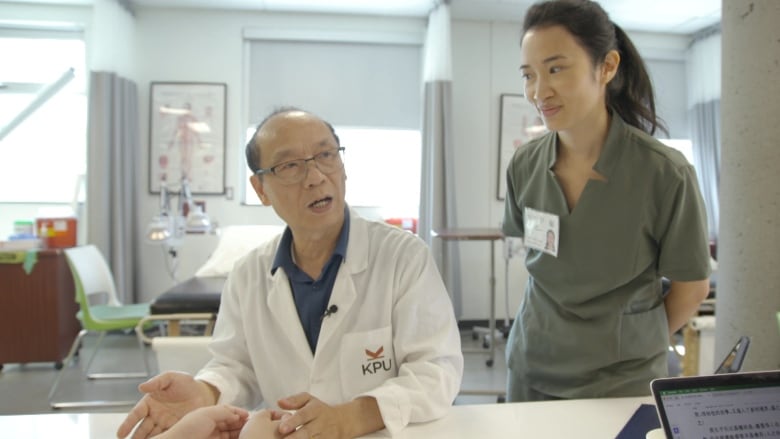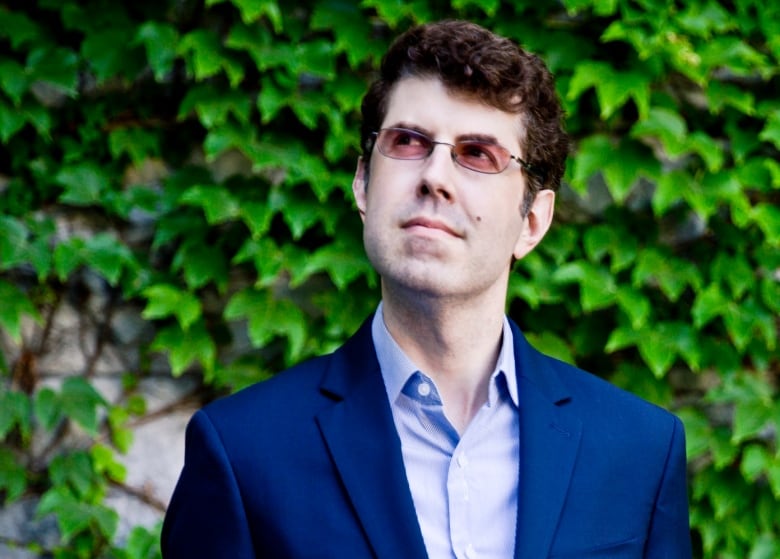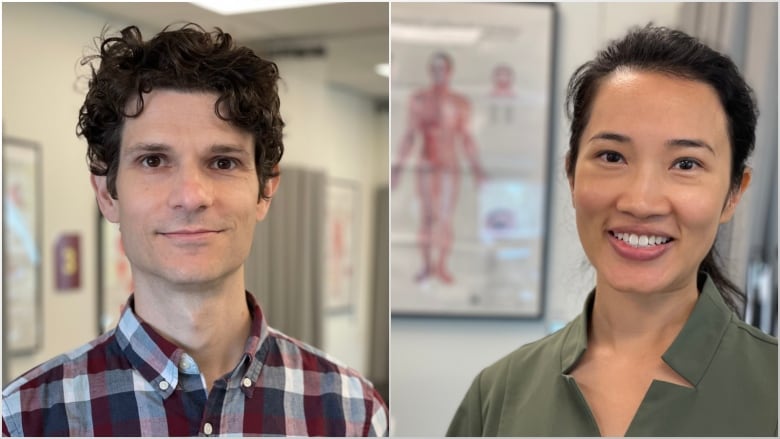
Caldwell Lever first tried traditional Chinese medicine years ago “out of desperation,” while struggling with a chronic illness.
“My back was to the wall,” he said. “Within 24 hours, I was a different person.”
He was won over by an approach he described as more holistic than what he’d experienced before: practitioners “interested in how I’m feeling: not only my blood work, but what my dreams are like,” Lever explained.
Lever is now midway through studies for a traditional Chinese medicine (TCM) diploma at Kwantlen Polytechnic University, which this summer announced it will launch Canada’s first bachelor’s degree in the field.
“I was really blessed to find amazing doctors and then amazing teachers [who helped] me bridge that moment from being a patient to wanting to help people, become a practitioner.”
Greenlit by the B.C. government to fill what it calls rising demand in the labour market, the new program marks a major step in Canadian recognition of TCM, proponents say, and comes amid a growing international spotlight on traditional medicine. However, skeptics of TCM and other alternative approaches remain wary of movement in this direction.
Hope for greater integration
Traditional Chinese medicine is a system based on the concept of balancing an energy force — called qi — flowing through the human body through a range of practices, including acupuncture, herbal remedies, massage and diet.
It is regulated in British Columbia, Alberta, Quebec, Ontario and Newfoundland and Labrador, with more than 7,000 licensed practitioners, herbalists and acupuncturists working in these provinces today, according to the Canadian industry’s regulatory body.
John Yang has worked for nearly a decade toward Kwantlen Polytechnic’s bachelor’s degree, which will welcome its inaugural cohort starting September 2025. As chair of KPU’s TCM program, he hopes the new offering will boost its acceptance and encourage more integration with the Canadian health-care system.
“The degree program can let the public [feel] more confident that we can train highly qualified TCM practitioners. Then there will be more mainstream public acceptance,” he said from the Richmond, B.C., campus.
“Currently we are not there yet, but I hope in the future there’s an integrated model.”

The degree will add topic areas like herbology and more advanced TCM approaches to the current diploma’s acupuncture-focused study, as well as courses in health sciences, arts and humanities, ethics and working with conventional health practitioners, says Sharmen Lee, dean of the B.C. school’s faculty of health.
“You’re getting a much broader, deeper education that allows you to develop additional competencies, such as being able to critically think, to evaluate and participate in research, and all of those other things that a university-based education can provide.”
Lee believes future graduates will be able to work alongside with biomedical professionals, with some becoming researchers as well — able to pursue post-grad studies abroad.
“They start to understand the fundamentals of conducting research, of reviewing published studies and then … to critically analyze what that means so that they can apply that to their practice,” Lee said. “It’s going to help to elevate the practice of traditional Chinese medicine … in our province.”
Researchers explore what’s safe, appropriate
With the World Health Organization (WHO) encouraging governments toward integrating traditional and complementary medicine into their health-care systems, there’s a need for researchers to develop strong evidence to guide policy-makers, says Nadine Ijaz, an assistant professor at Carleton University in Ottawa and president of the International Society for Traditional, Complementary and Integrative Medicine Research.
“Most Canadians at some point in their lifetime are using some form of what we call traditional and complementary medicine: that might be acupuncture, chiropractic, massage therapy, vitamins, yoga … people who are participating in Indigenous healing ceremonies within their own communities,” she said.
“How are governments to make good determinations about what to include? What is rigorous? What is safe? What is effective and what is cost effective, in addition to what is culturally appropriate?”
WATCH | Traditional medicine can help ‘illuminate … from a different angle’:
Ijaz is working with colleagues around the globe to determine research methods that are rigorous and appropriate for studying traditional and complementary medicine and policies for integration. Their report to the WHO will then inform recommendations for governments.
“I’m a scientist. I’m a researcher and so I’m fundamentally a person who is skeptical,” she said.
“If we find that research shows us that something is known to be safe, there’s a long history of use, it’s improving people’s well-being, improving people’s health … I think it would be inappropriate to not keep our eyes open and our minds open in considering bringing those things into health systems.”
More research and scientific inquiry is a good thing, but it depends on the type of research, says Jonathan Jarry, a science communicator for the McGill Office of Science and Society and co-host of the health and medicine podcast Body of Evidence.
Jarry said many studies on alternative medicine are low quality: too few participants, too short in duration, lacking follow-up or a proper control group. It’s an issue that plagues research on conventional therapies too, he acknowledged.
“I’m all for doing research on things that are plausible enough that they could realistically have a benefit, but then you have to also do very good, rigorous studies. Otherwise you’re just creating noise in the research literature.”
Ijaz and a group of colleagues around the globe are working toward determining strong research parameters without forcing alternative approaches “into a box where they don’t fit.”
For instance, a randomized controlled trial is the gold standard of research in biomedicine and excellent for studying pharmaceutical drugs and their effects, because participants in the control group get a placebo, perhaps a sugar pill, that means they can’t tell if they’re being treated with medication or not. But it doesn’t work for studying acupuncture treatment, chiropractic or even psychotherapy, Ijaz pointed out.
“If you’re getting an acupuncture treatment, you usually know that you’re getting a treatment…. It’s a little bit challenging to develop a placebo control for for those approaches,” said Ijaz.
“When we apply that particular gold standard to researching all therapeutic approaches … it sort of privileges the issue in favour of pharmaceutical drugs immediately.”
WATCH | What our health care system can learn from alternative medicine:
Need for uniform scientific standards
Jarry is concerned if people opt for traditional or alternative approaches — based on ancient, pre-scientific understanding of how the body works — without consulting conventional medicine on their condition, or in an emergency.
“I’ve received a number of massages in my life and I know that they’re not doing anything long term, but they really do feel good and they help me relax — and that is not nothing,” he said from Montreal.
“The problem is that too often many of these practices, including acupuncture, are sold as being complementary to medicine, but sometimes they are used as an alternative to medicine and that is very problematic.”

It’s important to keep an open mind, respect cultural perspectives and both learn from and study a range of medical practices, says Timothy Caulfield, a professor at the University of Alberta and research director of the Edmonton school’s Health Law Institute.
“But in the age of misinformation, we should also adhere to uniform scientific standards. There isn’t East and West science: there is science. I worry that these kinds of programs legitimize pseudoscience,” he said.

For Kelly Ling, a Kwantlen TCM student eager to apply for its upcoming bachelor’s, the notion of bridging traditional Chinese medicine and biomedical science is precisely what appeals.
As a Pilates instructor in Hong Kong before moving to Canada, Ling felt unable to help some clients improve “from the inside out.” She was drawn to TCM after seeing many top athletes and people suffering chronic pain choose it.
“I want to integrate both my [skillsets], to integrate together Western and Eastern sides,” she said.